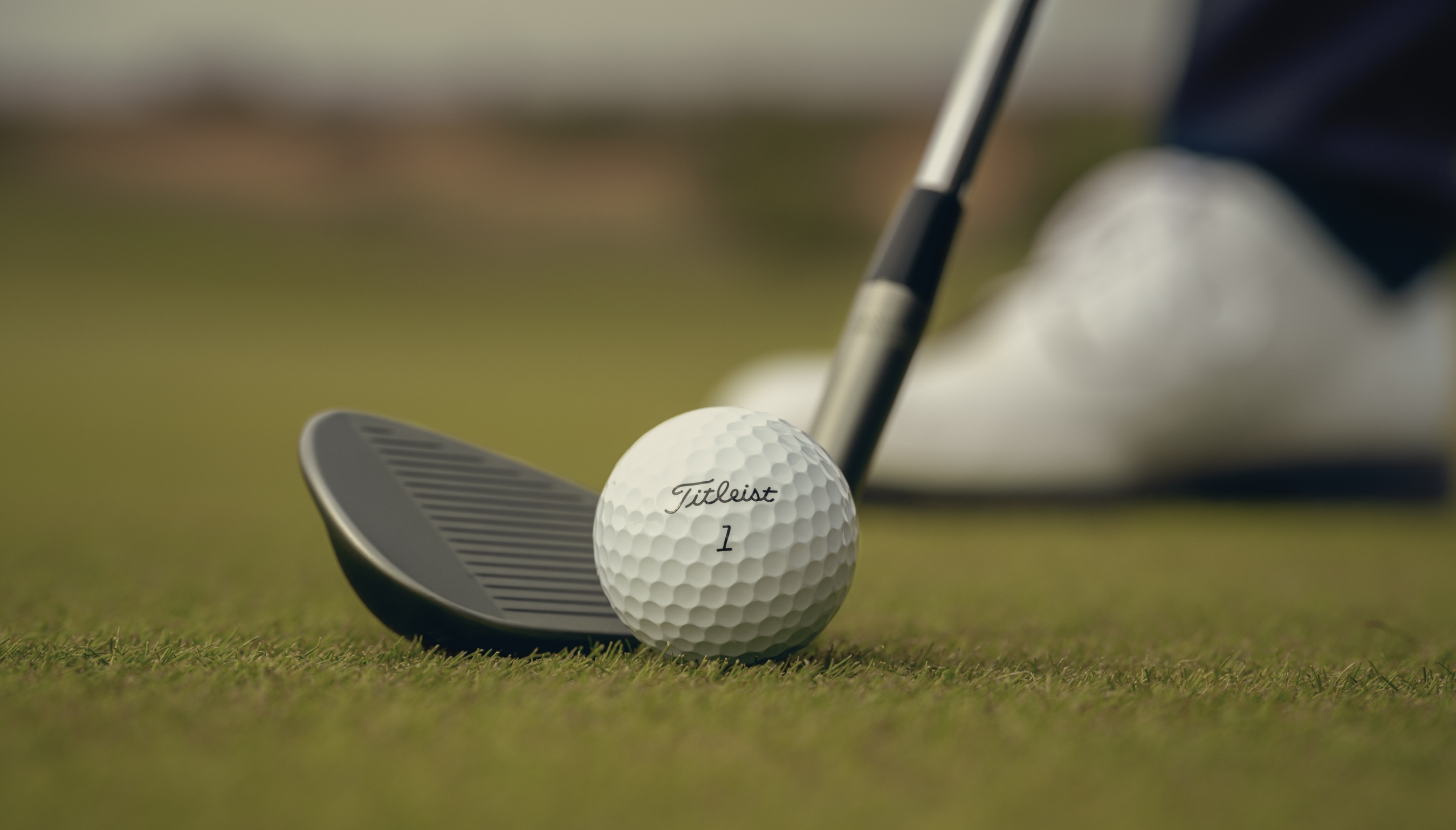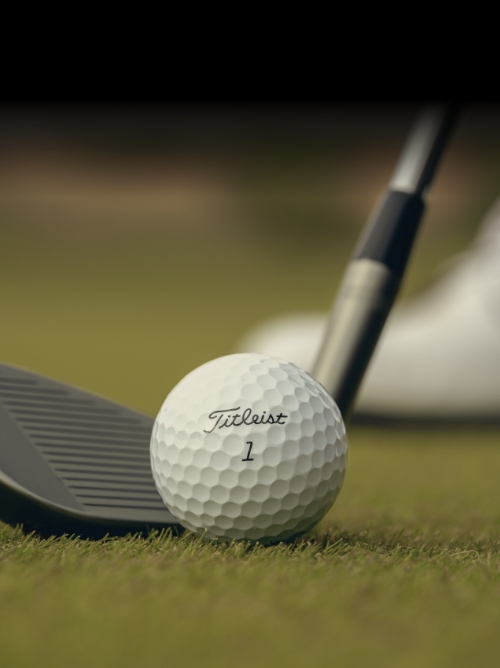Why this is important to get you the best recommendation
At Titleist, our goal is to help all golfers play better and shoot lower scores. Being fit for the right golf ball is an important part of that for every golfer. Why? Because there is no more essential piece of equipment than the golf ball. It is the only piece of equipment used on every shot, and there are game-changing performance differences between golf ball models.
Golfers seeking to play their best and shoot their lowest scores often priortize performance above all else. While other golfers may also have individual preferences that can influence their golf ball selection process. Player preferences can include feel, color, price, and appearance (play number or markings).
Most golfers like to see their golf ball fly through a specific "window". Every golf ball in the Titleist line is designed with its own unique aerodynamic package offering a variety of low, mid, and high trajectories, so knowing a golfer's preferred trajectory helps determine which golf ball is the best choice. It’s important to understand that flight changes the distance of the shot, the control, and the reaction of the golf ball on shots into the green. When a golf ball comes in lower than expected it’s likely to come into the green shallower and release out more than the golfer would like. If the shot flies too high, the golf ball may not carry as far and come up short of the intended target which could mean the difference between having a look at birdie or ending up in a front bunker. The goal is to achieve the optimized flight so that when the ball is descending into the green the golfer will get the stopping power needed to control that golf ball.
The key to shooting lower scores is improving performance on what we call the "scoring shots" - approach shots and short game shots. These critical shots account for the majority played by every golfer in a round. On the scoring shots, golfers need the appropriate amount of spin to provide the desired stopping power and control. The amount of spin a golfer can generate can come from club selection, club head speed, and the golf ball's construction. For instance, a premium golf ball with a very soft urethane cover and stiff casing layer underneath delivers high spin when combined with other factors like speed and angle of descent. Ultimately players are looking for enough spin where on shots into the green the ball has one bounce and stops.
The key to shooting lower scores is improving performance on what we call the "scoring shots" - approach shots and short game shots. These critical shots account for the majority played by every golfer in a round. On the scoring shots, golfers need the appropriate amount of spin to provide the desired stopping power and control. The amount of spin a golfer can generate can come from club selection, club head speed and the golf ball's construction. This is why Titleist offers a range of golf ball models, each with a different performance.
While flight and spin are measurable performance attributes, feel is a preference and although it does not have any direct impact on performance, feel is still very important to golfers and can often inspire confidence. Some prefer a softer feeling golf ball and others prefer a slightly firmer feeling golf ball. Feel is also very closely tied to acoustics so the sound a golf ball makes off different clubs may change the perception of feel. It’s always important to understand a golfer’s feel preference in helping to determine the golf ball that best fits their game.
Trajectory, stopping power, and feel are all important characteristics to consider when selecting the best golf ball for your game. Understanding which of these characteristics is most important to a golfer will help determine which golf ball is best for that golfer's game.
Most golfers like to see their golf ball fly through a specific "window". Every golf ball in the Titleist line is designed with its own unique aerodynamic package offering a variety of low, mid, and high trajectories, so knowing a golfer's preferred trajectory helps determine which golf ball is the best choice. It’s important to understand that flight changes the distance of the shot, the control, and the reaction of the golf ball on shots into the green. When a golf ball comes in lower than expected it’s likely to come into the green shallower and release out more than the golfer would like. If the shot flies too high, the golf ball may not carry as far and come up short of the intended target which could mean the difference between having a look at birdie or ending up in a front bunker. The goal is to achieve the optimized flight so that when the ball is descending into the green the golfer will get the stopping power needed to control that golf ball.
The key to shooting lower scores is improving performance on what we call the "scoring shots" - approach shots and short game shots. These critical shots account for the majority played by every golfer in a round. On the scoring shots, golfers need the appropriate amount of spin to provide the desired stopping power and control. The amount of spin a golfer can generate can come from club selection, club head speed, and the golf ball's construction. For instance, a premium golf ball with a very soft urethane cover and stiff casing layer underneath delivers high spin when combined with other factors like speed and angle of descent. Ultimately players are looking for enough spin where on shots into the green the ball has one bounce and stops.
The key to shooting lower scores is improving performance on what we call the "scoring shots" - approach shots and short game shots. These critical shots account for the majority played by every golfer in a round. On the scoring shots, golfers need the appropriate amount of spin to provide the desired stopping power and control. The amount of spin a golfer can generate can come from club selection, club head speed and the golf ball's construction. This is why Titleist offers a range of golf ball models, each with a different performance.
While flight and spin are measurable performance attributes, feel is a preference and although it does not have any direct impact on performance, feel is still very important to golfers and can often inspire confidence. Some prefer a softer feeling golf ball and others prefer a slightly firmer feeling golf ball. Feel is also very closely tied to acoustics so the sound a golf ball makes off different clubs may change the perception of feel. It’s always important to understand a golfer’s feel preference in helping to determine the golf ball that best fits their game.
Most golfers like to see their golf ball fly through a specific "window". Every golf ball in the Titleist line is designed with its own unique aerodynamic package offering a variety of low, mid, and high trajectories, so knowing a golfer's preferred trajectory helps determine which golf ball is the best choice. It’s important to understand that flight changes the distance of the shot, the control, and the reaction of the golf ball on shots into the green. When a golf ball comes in lower than expected it’s likely to come into the green shallower and release out more than the golfer would like. If the shot flies too high, the golf ball may not carry as far and come up short of the intended target which could mean the difference between having a look at birdie or ending up in a front bunker. The goal is to achieve the optimized flight so that when the ball is descending into the green the golfer will get the stopping power needed to control that golf ball.

